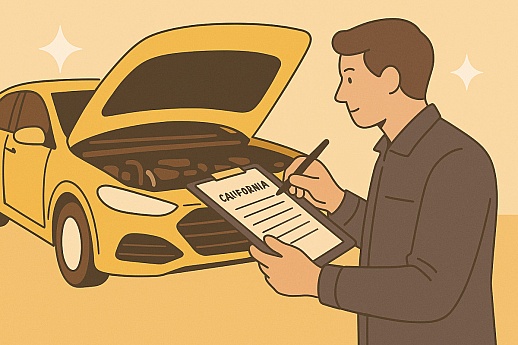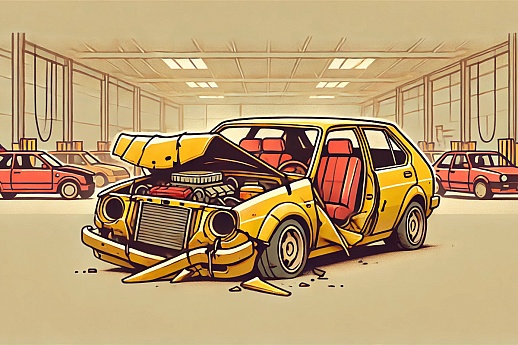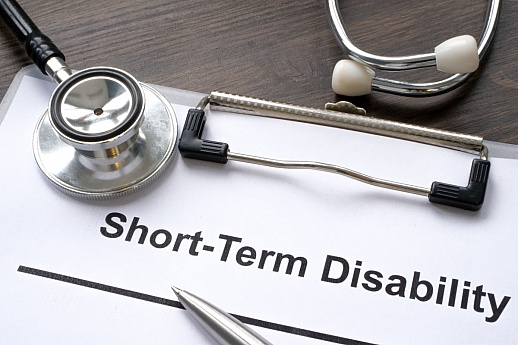How to Save Gas While Driving: Truth and Myth
As gas prices fluctuate and environmental concerns grow, drivers everywhere are looking into how to reduce their fuel consumption. While the Internet is filled with ways to save money at the pump, not all of these strategies are based on fact.

In this article, we'll examine common gas-saving tips to see which truly help you save fuel and which are just myths. Join us as we investigate the truth and fiction of how to save fuel while driving!
Maintaining Steady Speed Saves Gas: Truth
It’s true that maintaining a steady speed does save gas. Steady driving increases fuel efficiency by cutting down on unnecessary acceleration and braking, which wastes fuel and the kinetic energy that your vehicle has already built up. The U.S. Department of Energy notes that smooth driving can improve mileage by 10% to 30% on highways and up to 40% in cities.
Engines operate most efficiently at consistent speeds, especially within their optimal performance range, which maximizes fuel economy. Light-duty vehicles, such as cars and trucks, are most fuel-efficient at speeds between 40 and 50 mph. Driving at 80 mph instead of 60 mph might result in a 27% reduction in fuel efficiency.
The U.S. Department of Energy endorses this, indicating that fuel efficiency frequently drops considerably at speeds greater than 50 mph. Driving faster than 50 mph leads to a $0.16 per gallon increase in gas expenses.
Using Cruise Control Conserves Gas: Truth
The advantages of steady speeds are further optimized by cruise control, which automatically controls a vehicle's speed. According to the U.S. Department of Energy, using cruise control on highways can help you save gas by maintaining a consistent pace and avoiding excessive gasoline waste caused by changing speeds.
Cruise control may boost fuel efficiency by 7% to 14%, based on driving circumstances and vehicle type. Smoother, flatter highways, for instance, provide better circumstances for cruise control and can result in more savings, but mountainous or congested roads may not benefit as much.
Additionally, newer vehicles with sophisticated cruise control systems, such as adaptive cruise control, are likely to conserve more gas. This technology uses radar and sensors to automatically adjust a vehicle's speed based on traffic conditions. This avoids unnecessary accelerations and braking, optimizing speed for better gas conservation, especially in variable traffic conditions.
Keeping the Air Conditioning Off Saves More Gas: Truth
Turning off the air conditioning in your car can indeed reduce fuel consumption. The air conditioner places an additional load on the engine, which can increase fuel usage by up to 20%.
However, at higher speeds, such as on the highway, open windows can reduce a car’s aerodynamics, potentially offsetting any savings from turning off the AC. If you’re on the highway, using the air conditioner might make little difference in fuel consumption compared to the drag caused by open windows.
Overinflated Tires Increase Fuel Efficiency: Myth
It's a misconception that overinflating tires enhances fuel economy. In reality, keeping tires at the manufacturer's recommended pressure level aids in achieving optimal fuel efficiency. Manufacturers specify the recommended tire pressure, usually on a sticker inside the driver’s door or in the owner’s manual.
Generally, optimal pressure for passenger cars ranges from about 30 to 35 psi (pounds per square inch). A study by the U.S. Department of Energy found that properly inflated tires can improve gas mileage by up to 3.3%.
Topping Off the Tank Increases Fuel Capacity: Myth
The belief that "topping off the tank" increases fuel capacity is not only a myth but also dangerous and illegal in some states. Topping off refers to pumping gas into the vehicle's fuel tank after the automatic nozzle has clicked off, attempting to add more fuel into the tank.
The myth might have originated from the desire to maximize fuel purchase, but it risks overfilling and spilling.
This can harm the vehicle's vapor recovery system, increasing the risk of gasoline vapors building up around the car, which can lead to extremely dangerous fire hazards.
Changing Filters Increases Fuel Efficiency: Truth
Changing your vehicle's air filter can indeed improve gas mileage, albeit indirectly. A clean air filter allows the engine to receive an optimal amount of air, which is key for the combustion process, where air and fuel are mixed to power the engine.
Efficient airflow ensures the engine does not have to expend extra energy to draw in air. This reduces unnecessary fuel consumption and allows the engine to run smoother and more efficiently.
Replacing a dirty air filter can improve your car's gas mileage by as much as 10%, and this simple maintenance task can lead to fuel cost savings. To optimize your field efficiency with a clean air filter, you should change it every 12 months or every 12,000 miles, whichever comes first.
Using Premium Gas Improves Efficiency: Myth
Using premium gasoline does not improve fuel efficiency in vehicles designed to run on regular fuel. This misconception persists because premium gasoline is often perceived as superior due to its higher cost and "premium" designation. In reality, premium fuel has a higher octane rating, which prevents engine knocking in high-performance engines with higher compression ratios.
For these specific engines, such as sports cars with turbochargers, premium gasoline is necessary to avoid knocking and ensure proper engine function. However, for most standard vehicles, there is no benefit in using premium fuel over regular.
Adding Additives to the Fuel Improves Fuel Efficiency: Myth
Adding fuel additives to improve fuel efficiency is largely a myth. While there are claims that additives can enhance performance, reduce emissions, and save fuel, these assertions often rely on manufacturers’ internal tests rather than independent research.
Independent studies on fuel additives provide inconclusive evidence; while some suggest minor improvements in fuel economy, others detect no significant effect. Additives like detergents may help maintain engine performance, potentially aiding fuel efficiency slightly, but these benefits vary based on engine condition, driving habits, and fuel quality.
Considering the costs of additives, the potential savings on fuel might not justify the expense. Moreover, not all vehicles benefit from additives; some may experience adverse effects if the additives aren't compatible with the engine or fuel system.
In general, good quality gasoline without additives is preferred for maintaining vehicle health and efficiency.
Planning Your Trips Minimizes Fuel Consumption: Truth
It's true that planning your trips can reduce fuel consumption. The amount of gas you can save depends heavily on the route length and the number of stops you make.
In colder weather, engines require more fuel to reach optimal operating temperatures. When you make multiple short trips, your car's engine cools down between each stop and needs additional fuel to warm up each time it's restarted.
This repeated warming process increases overall fuel consumption. By combining errands into one trip, you can minimize these frequent starts, which are costly in fuel efficiency.
Additionally, an engine operates less efficiently when cold, meaning it doesn't combust the fuel as completely, leading to increased fuel usage. This makes short trips particularly costly in terms of gas usage compared to fewer, longer trips where the engine stays warm and operates more efficiently.
Removing Excess Weight Helps Decrease Gas Consumption: Truth
Reducing your vehicle's weight is an effective strategy for improving fuel efficiency. Studies indicate that for every 100 pounds removed from a vehicle, you can expect an increase in fuel economy of about 1% to 2%. For heavy vehicles like trucks, reducing weight can lead to substantial fuel savings – removing 3,000 pounds could save between 200 and 500 gallons of fuel annually.
A study conducted by the Oak Ridge National Laboratory found that reducing vehicle weight by 10% can improve fuel economy by up to 6% in city driving conditions and up to 8% on the highway. This improvement in efficiency occurs because a lighter vehicle requires less energy to move, thus consuming less fuel.
When looking at how to conserve gas while driving, also consider vehicle design. Vehicles with lightweight materials and overall design can all contribute to lower fuel consumption.
Filling up Early in the Morning: Myth
The belief that filling up your gas tank early in the morning will yield more fuel due to cooler temperatures is a myth. In reality, gasoline is stored in underground tanks where the temperature is regulated and less susceptible to daily temperature changes. Thus, the density of gasoline does not vary significantly during the day in a way that would make a noticeable difference at the pump.
However, avoiding peak traffic hours may help drivers conserve gasoline. Filling up in the early morning can have incidental benefits, such as less congested roads. Driving when there's less traffic reduces idling and stop-and-go conditions, which in turn conserves fuel.
Drafting Behind Large Vehicles Improves Fuel Efficiency: Dangerous Truth
Drafting is a technique commonly used in NASCAR that involves driving very closely behind another vehicle to reduce air resistance (drag) and improve fuel efficiency. While the science behind this technique is tried and true, in practice, it is extremely dangerous and is not a recommended way to cut fuel costs.
The MythBusters team explored the concept of drafting behind a big rig to determine if it indeed saves fuel. Their investigation began with a small-scale model in a wind tunnel and progressed to a full-scale experiment with a Dodge Magnum drafting behind a Freightliner Cascadia big rig at varying distances. The tests conclusively showed that fuel efficiency improves as the following distance decreases, achieving gains at dangerously close proximities.
However, the MythBusters' experiment on drafting behind a big rig demonstrated the potential dangers associated with this practice. The primary risks include reduced reaction times and limited visibility, which can lead to high-risk situations on the road.
For example, drafting too close to a large vehicle doesn't allow adequate space or time to react to sudden stops or changes in the truck’s speed. Additionally, the close proximity restricts the following driver’s view of other road conditions, such as obstacles, traffic signals, or changes in traffic flow.
Bottom Line
As we wrap up our journey through the truths and myths on how to save gas while driving, it's clear that not all tips are created equal. While some strategies, like using cruise control and maintaining consistent speeds, can genuinely decrease your fuel consumption, others, like over-inflating your tires or topping off your gas tank, can be harmful.
Remember, the best way to cut down on your gas usage isn't just about following a single tip – it's about understanding your vehicle and how different driving habits affect fuel efficiency.
Sources
U.S. Department of Energy. "Driving More Efficiently." Accessed May 3, 2024
U.S. Department of Energy. "Gas-Saving Tips." Accessed May 3, 2024.
G Exhaust. "How Does a Car Air Filter Improve Fuel Efficiency?" Accessed May 3, 2024
U.S. Department of Energy. "Fuel Economy in Cold Weather." Accessed May 3, 2024
PS Energy. "Weight Distribution for Fuel Efficiency." Accessed May 3, 2024
Autoblog. "How Does Weight Affect a Vehicle's Efficiency?" Accessed May 3, 2024
U.S. Department of Energy. "Lightweight Materials for Cars and Trucks." Accessed May 3, 2024.
BCcampus. "Drafting Behind Big Rigs - Mythbusters Report." Accessed May 3, 2024



